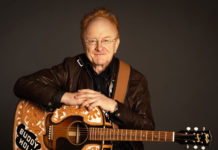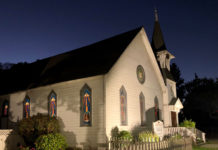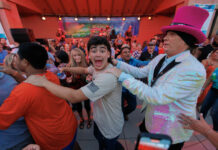Christmas sometimes seems to be the American national holiday. Even as the economy seems to be improving, stores are counting on “the Christmas spirit” to keep them solvent for another year.
Perhaps the most important symbol of Christmas, at least in a secular context, is Santa Claus, the rotund and jolly gift-giver who lives at the North Pole. His globe-circling trip on Christmas Eve is looked forward to by boys and girls across the United States, as well as advertisers and merchants of all types.
This myth is based on a Christian saint, Bishop Nicholas of Myra, who was reportedly born in Turkey in the third century to a wealthy Christian family. When they died, he spent his inheritance to help the poor and devoted his life to serving God. There are many legends told about this holy man.
n He attended the great Ecumenical Council of bishops that met in Nicea in 325 which produced the summary of Christian belief known as the Nicene Creed.
n He brought back to life through his earnest prayers three young men that an innkeeper murdered and sealed in a barrel.
n When the three daughters of a peasant were threatened with being sold into slavery, he rescued them by throwing down their chimney three bags of gold coins for use as a dowry. It is speculated that they landed in socks or shoes drying before the fireplace, leading to the present Christmas Eve custom.
It is thought that St. Nicholas died in 343 and was buried in the cathedral of the Turkish city of Myra, where he soon was honored as a saint. In the 11th century, however, Italian officials, afraid Muslims might desecrate his remains, dug up his bones and removed these relics, taking them to Bari, a city in Italy, to be reburied in a basilica dedicated to his memory. A major festival honoring him is held in Bari each May, though the official feast day in the Christian calendar for St. Nicholas is Dec. 6.
Perhaps because of his gift-giving, love of children and the closeness of his feast day to the Nativity, St. Nicholas became associated with the great holiday of Christmas. The Dutch call him “Sinterklaas,” which in English has become “Santa Claus.” In Britain he is often called “Father Christmas”; “Old St. Nick” is now the patron saint of Christmas.
But this holy man is the patron saint of an amazing number of other things, such as barrel-makers, captives, sailors, fishermen, pawnbrokers, children and the the countries of Greece and Russia. Because of his great popularity in medieval Europe, thousands of churches were dedicated to him, including more than 400 in England. For more information about this famous figure, including costume ideas, games, plays/scripts, stories and tips for home celebrations, visit www.st.nicholascenter.org.
This year one of South Valley’s most beloved traditions occurs just after St. Nicholas Day. On Dec. 8, between 7:30 and 11 a.m., the Home and School Club of San Martin Gwinn School will hold it’s annual Santa’s Breakfast, a tradition going back more than 25 years. All proceeds directly support local students through extracurricular activities, tutoring, fieldtrips and classroom supplies.
Breakfasts cost $8 ($6 children), and there are many activities to enjoy, such as photos with Santa, a cake walk, prize wheel, arts and crafts corner, music from the school choir and raffle prizes. For more information, call 408-201-6480.







